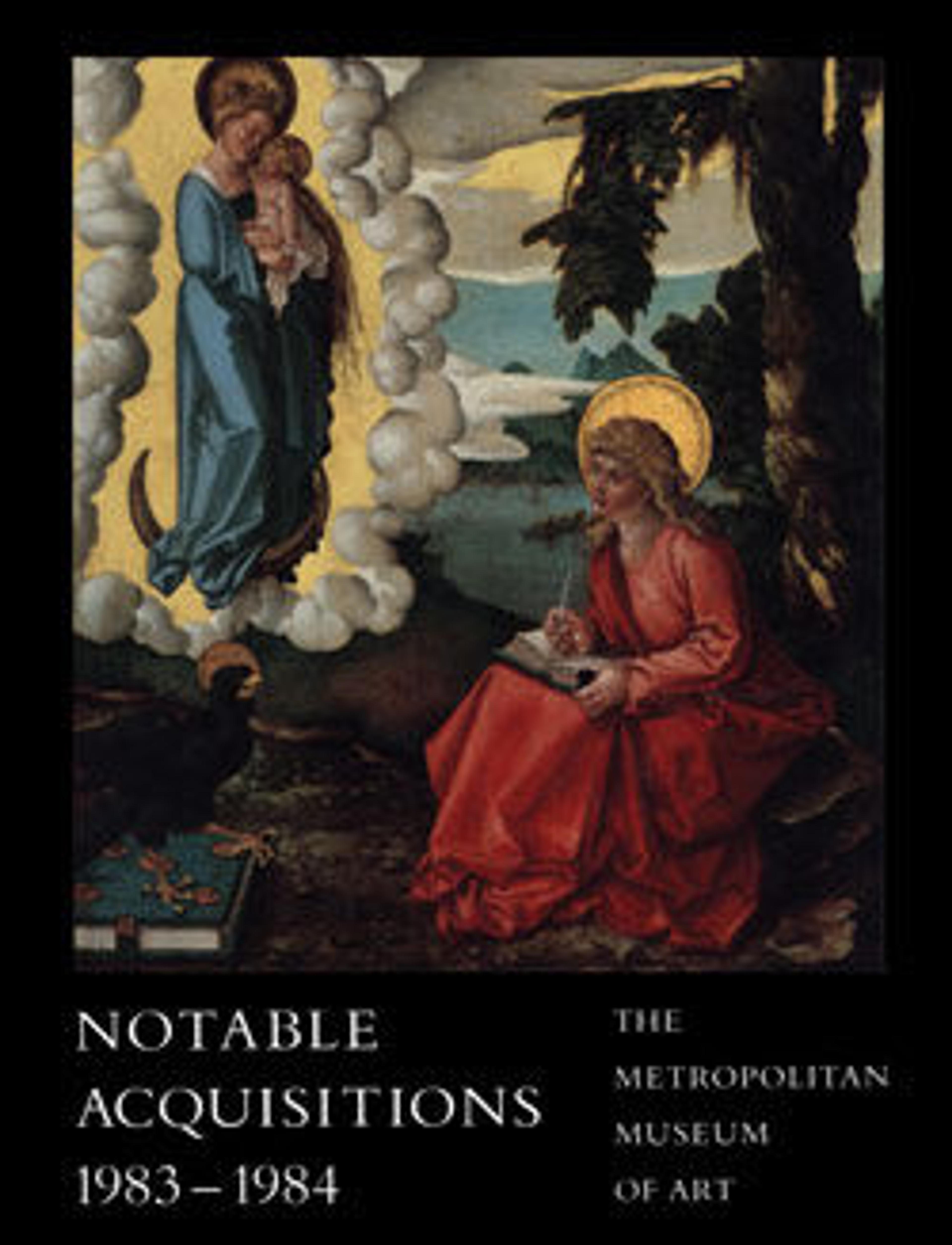Bowl
During the course of the sixteenth century a number of potteries making tin-enameled earthenware came into existence in Talavera de la Reina, a small town some sixty miles southwest of Madrid. The town supplied plain wares that were greatly admired for the beauty of their white surface—the "bianco"—and others that were decorated in a subdued palette of high-temperature greens, yellows, browns, blues, and purples.
This jar and bowl (1983.469.1, .2) come from a pottery, so far unidentified by name, that seems to have obtained important orders over a fairly long period in the late sixteenth and the seventeenth centuries. The characteristics of the factory are well exemplified in these objects: a fine bianco; a very beautiful blue—skillfully modulated from light to deep shades—that predominated in the early and mid-16oos; and an energetic freedom in the use of the brush point to draw in figures and background vegetation. In the latter part of the seventeenth century the prevailing tones included greens, yellows, and brownish purples.
Large jars and bowls resembling ours are in the Victoria and Albert Museum, London; the Museo de Arqueología Nacional, Madrid; the Hispanic Society of America, New York; and the Staatliche Schlösser und Gärten, Charlottenburg. The Charlottenburg jar displays the arms of the royal Monastery of San Lorenzo at the Escorial on its cover. A similar jar, with the arms of the monastery on its neck, was sold at auction at Christie's, London, on March 26, 1984, lot 42.
This entire group of jars and bowls, all of similarly imposing dimensions, appears to be interconnected. For example, scenes showing horsemen engaged in various phases of capturing a wild bull, aided by two tame bulls with cropped horns and wearing bells at their throats, occur on some of the jars and .on the interiors of all the bowls. On others of the jars and on the exteriors of all the bowls are the scenes taken from Stradanus's Venationes: representations of animal combat, unusual in that they illustrate different species in opposition, such as a leopard attacking a horse on the Metropolitan's jar.
The source of the depiction of the capturing of a bull for the corrida has not yet been found. This specifically Spanish theme will presumably be traced only in hitherto unresearched Spanish collections of drawings and prints. The ceramic paintings based on the Venationes follow the engraved sources very closely.
This jar and bowl (1983.469.1, .2) come from a pottery, so far unidentified by name, that seems to have obtained important orders over a fairly long period in the late sixteenth and the seventeenth centuries. The characteristics of the factory are well exemplified in these objects: a fine bianco; a very beautiful blue—skillfully modulated from light to deep shades—that predominated in the early and mid-16oos; and an energetic freedom in the use of the brush point to draw in figures and background vegetation. In the latter part of the seventeenth century the prevailing tones included greens, yellows, and brownish purples.
Large jars and bowls resembling ours are in the Victoria and Albert Museum, London; the Museo de Arqueología Nacional, Madrid; the Hispanic Society of America, New York; and the Staatliche Schlösser und Gärten, Charlottenburg. The Charlottenburg jar displays the arms of the royal Monastery of San Lorenzo at the Escorial on its cover. A similar jar, with the arms of the monastery on its neck, was sold at auction at Christie's, London, on March 26, 1984, lot 42.
This entire group of jars and bowls, all of similarly imposing dimensions, appears to be interconnected. For example, scenes showing horsemen engaged in various phases of capturing a wild bull, aided by two tame bulls with cropped horns and wearing bells at their throats, occur on some of the jars and .on the interiors of all the bowls. On others of the jars and on the exteriors of all the bowls are the scenes taken from Stradanus's Venationes: representations of animal combat, unusual in that they illustrate different species in opposition, such as a leopard attacking a horse on the Metropolitan's jar.
The source of the depiction of the capturing of a bull for the corrida has not yet been found. This specifically Spanish theme will presumably be traced only in hitherto unresearched Spanish collections of drawings and prints. The ceramic paintings based on the Venationes follow the engraved sources very closely.
Artwork Details
- Title:Bowl
- Date:ca. 1625–50
- Culture:Spanish, Talavera de la Reina
- Medium:Tin-glazed earthenware
- Dimensions:Diameter: 21 1/4 in. (54 cm)
- Classification:Ceramics-Pottery
- Credit Line:Purchase, Gift of Irwin Untermyer, by exchange, 1983
- Object Number:1983.469.1
- Curatorial Department: European Sculpture and Decorative Arts
More Artwork
Research Resources
The Met provides unparalleled resources for research and welcomes an international community of students and scholars. The Met's Open Access API is where creators and researchers can connect to the The Met collection. Open Access data and public domain images are available for unrestricted commercial and noncommercial use without permission or fee.
To request images under copyright and other restrictions, please use this Image Request form.
Feedback
We continue to research and examine historical and cultural context for objects in The Met collection. If you have comments or questions about this object record, please contact us using the form below. The Museum looks forward to receiving your comments.
